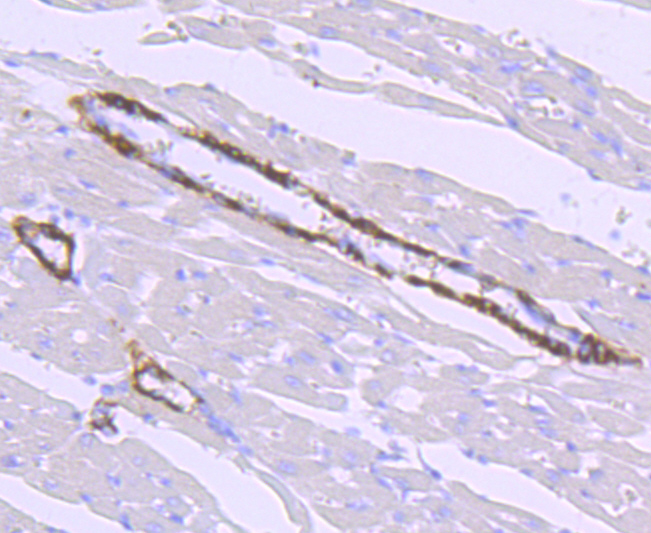Product Detail
Product NameHepcidin Rabbit mAb
Clone No.JA11-27
Host SpeciesRecombinant Rabbit
Clonality Monoclonal
PurificationProA affinity purified
ApplicationsWB, IHC
Species ReactivityHu, Rt
Immunogen Descrecombinant protein
ConjugateUnconjugated
Other NamesHamp antibody
HEPC antibody
HEPC_HUMAN antibody
Hepc20 antibody
Hepc25 antibody
Hepcidin-20 antibody
HFE2B antibody
LEAP-1 antibody
LEAP1 antibody
Liver-expressed antimicrobial peptide 1 antibody
PLTR antibody
Putative liver tumor regressor antibody
Accession NoSwiss-Prot#:P81172
Uniprot
P81172
Gene ID
57817;
Calculated MW3 kDa
Formulation1*TBS (pH7.4), 1%BSA, 40%Glycerol. Preservative: 0.05% Sodium Azide.
StorageStore at -20˚C
Application Details
WB: 1:500-1:1,000
IHC: 1:50-1:200
Immunohistochemical analysis of paraffin-embedded human liver tissue using anti- Hepcidin antibody. Counter stained with hematoxylin.
Immunohistochemical analysis of paraffin-embedded rat heart tissue using anti- Hepcidin antibody. Counter stained with hematoxylin.
Immunohistochemical analysis of paraffin-embedded rat brain tissue using anti- Hepcidin antibody. Counter stained with hematoxylin.
Hepcidin, also known as HAMP, HEPC, LEAP1 or HFE2B, is an 84 amino acid secreted protein that regulates iron-related signaling events. Highly expressed in liver with lower expression in heart, brain, lung, prostate and thyroid, hepcidin is thought to maintain iron homeostasis and, in conjunction with the HFE protein (a protein that is defective in hereditary hemochromatosis), may mediate both iron storage in macrophages and intestinal iron absorption. Additionally, hepcidin has strong antimicrobial activity against gram-positive and gram-negative bacteria, as well as certain yeast strains, suggesting that hepcidin may play a crucial role in staving off bacterial infections. Defects in the gene encoding hepcidin are the cause of hemochromatosis type 2B (also known as juvenile hemochromatosis), an early-onset autosomal recessive disorder that results in severe iron overload and is characterized by hepatic fibrosis, hypogonadotrophic hypogonadism and cardiomyopathy.
If you have published an article using product 49534, please notify us so that we can cite your literature.





 Yes
Yes



